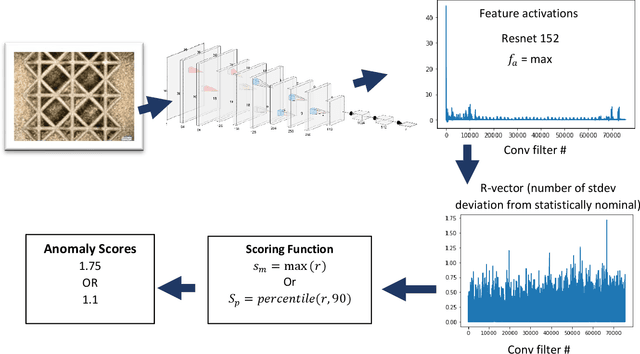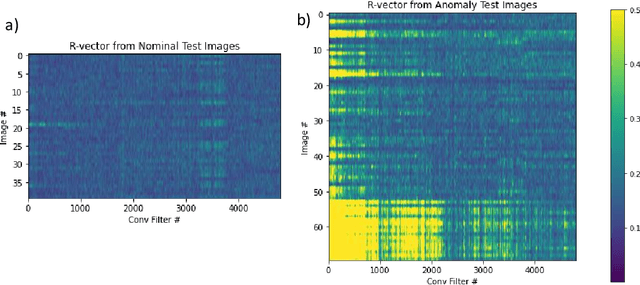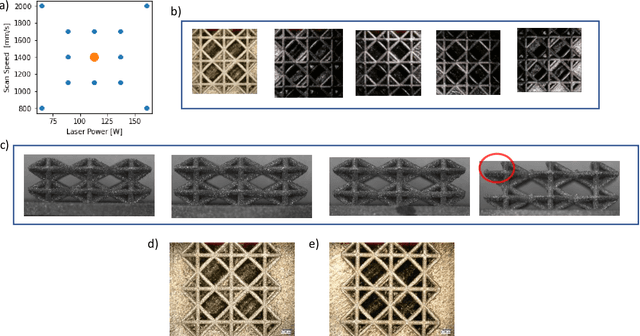Anthony Garland
Unsupervised Multimodal Fusion of In-process Sensor Data for Advanced Manufacturing Process Monitoring
Oct 29, 2024Abstract:Effective monitoring of manufacturing processes is crucial for maintaining product quality and operational efficiency. Modern manufacturing environments generate vast amounts of multimodal data, including visual imagery from various perspectives and resolutions, hyperspectral data, and machine health monitoring information such as actuator positions, accelerometer readings, and temperature measurements. However, interpreting this complex, high-dimensional data presents significant challenges, particularly when labeled datasets are unavailable. This paper presents a novel approach to multimodal sensor data fusion in manufacturing processes, inspired by the Contrastive Language-Image Pre-training (CLIP) model. We leverage contrastive learning techniques to correlate different data modalities without the need for labeled data, developing encoders for five distinct modalities: visual imagery, audio signals, laser position (x and y coordinates), and laser power measurements. By compressing these high-dimensional datasets into low-dimensional representational spaces, our approach facilitates downstream tasks such as process control, anomaly detection, and quality assurance. We evaluate the effectiveness of our approach through experiments, demonstrating its potential to enhance process monitoring capabilities in advanced manufacturing systems. This research contributes to smart manufacturing by providing a flexible, scalable framework for multimodal data fusion that can adapt to diverse manufacturing environments and sensor configurations.
ThermoPore: Predicting Part Porosity Based on Thermal Images Using Deep Learning
Apr 23, 2024



Abstract:We present a deep learning approach for quantifying and localizing ex-situ porosity within Laser Powder Bed Fusion fabricated samples utilizing in-situ thermal image monitoring data. Our goal is to build the real time porosity map of parts based on thermal images acquired during the build. The quantification task builds upon the established Convolutional Neural Network model architecture to predict pore count and the localization task leverages the spatial and temporal attention mechanisms of the novel Video Vision Transformer model to indicate areas of expected porosity. Our model for porosity quantification achieved a $R^2$ score of 0.57 and our model for porosity localization produced an average IoU score of 0.32 and a maximum of 1.0. This work is setting the foundations of part porosity "Digital Twins" based on additive manufacturing monitoring data and can be applied downstream to reduce time-intensive post-inspection and testing activities during part qualification and certification. In addition, we seek to accelerate the acquisition of crucial insights normally only available through ex-situ part evaluation by means of machine learning analysis of in-situ process monitoring data.
Feature anomaly detection system (FADS) for intelligent manufacturing
Apr 21, 2022



Abstract:Anomaly detection is important for industrial automation and part quality assurance, and while humans can easily detect anomalies in components given a few examples, designing a generic automated system that can perform at human or above human capabilities remains a challenge. In this work, we present a simple new anomaly detection algorithm called FADS (feature-based anomaly detection system) which leverages pretrained convolutional neural networks (CNN) to generate a statistical model of nominal inputs by observing the activation of the convolutional filters. During inference the system compares the convolutional filter activation of the new input to the statistical model and flags activations that are outside the expected range of values and therefore likely an anomaly. By using a pretrained network, FADS demonstrates excellent performance similar to or better than other machine learning approaches to anomaly detection while at the same time FADS requires no tuning of the CNN weights. We demonstrate FADS ability by detecting process parameter changes on a custom dataset of additively manufactured lattices. The FADS localization algorithm shows that textural differences that are visible on the surface can be used to detect process parameter changes. In addition, we test FADS on benchmark datasets, such as the MVTec Anomaly Detection dataset, and report good results.
 Add to Chrome
Add to Chrome Add to Firefox
Add to Firefox Add to Edge
Add to Edge